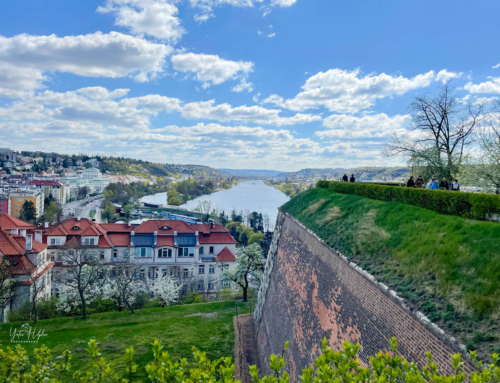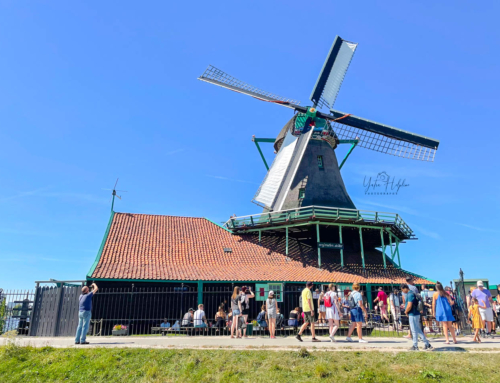
Budapest, a beautifully historic city that most people add to their ever-growing bucket list and for good reason. It’s freaking gorgeous! It’s a city that has grown in popularity these last few years but is often overshadowed by its neighbouring city of Prague which is such a shame because as pretty as Prague is (I love you Prague!) there is so much to love about Budapest and as you will discover in the post, there are tons of hidden gems in Budapest just waiting to be explored.
Seriously, Budapest will take your breath away.
It’s a city steeped in history; it’s cheap; it’s less touristy than other major cities in Central Europe AND there is a tranquil island in the middle of the city. I mean really Budapest, can you be any more perfect?
1. Matthias Church
Matthias Church is one of the finest churches in Budapest and the most unique churches in Europe. Located atop the Buda Castle hill, it has been serving the citizens of Buda Castle Hill since 1015, its foundation by the first Hungarian king. Bored with churches? Not this time.
Full of surprises, mysteries, and treasures, the church has a breathtaking interior with colours inspired by orientalism and romantic historicism. Its mystically exotic atmosphere paired with its Neo-Gothic features differentiates it from any other church.
Matthias Church is unlike many of the typical churches dating back to the Middle Ages. Be prepared to be surprised for its off the beaten track inner beauty.
The church was used as a coronation church by Hungarian kings for centuries, also a mosque for over 150 years by the Ottoman Turks, once owned by Franciscans, Jesuits, now a thriving Catholic church with holy masses, concerts, plenty of weddings, thousands of tourists. The graceful architecture and stunningly rich, all embracing wall paintings of the majestic building will leave you speechless.
While the outside of Matthias Church offers the historical beauty of traditional Gothic churches with delicate turrets, the coloured tile roofs already give away that this church is not following the usual recipe: entering inside the church you will experience one of the most welcoming combinations of warm lights, shadows and colours with orange, brown, golden hewed frescos reaching from floor to ceiling, beautiful stain glass windows, far reaching arches, century old wooden pews, medieval remnants.
2. Model Of The Hungarian Parliament Building
The Hungarian Parliament Building, also known as the Parliament of Budapest after its location, is the seat of the National Assembly of Hungary, a notable landmark of Hungary, and a popular tourist destination in Budapest. It is situated on Kossuth Square in the Pest side of the city, on the eastern bank of the Danube. It was designed by Hungarian architect Imre Steindl in neo-Gothic style and opened in 1902. It has been the largest building in Hungary since its completion and a miniature model of it is placed at the front side.
3. Kossuth Memorial
After the death of Lajos Kossuth (March 21, 1894) and his sumptuous funeral in Budapest, a public subscription was almost immediately announced to build a memorial for the leader of the 1848 Revolution. During the next years 850,000 forints came together, a huge sum in those days. In 1906 the competition was won by János Horvay after long debates about the style and message of the memorial. Although the public was dissatisfied with Horvay’s idea the sculptor began working. Until 1914 all the figures of the group were completed except Kossuth himself but then the work came to a halt because of World War I. The colossal Ruskica marble plinth remained in the quarry in Transylvania and was confiscated by the invading Romanian troops. In the years following the war, Horvay completed the Kossuth statue and a new plinth was made of simple limestone.
The first Kossuth Memorial was officially inaugurated on 6 November 1927 by Governor Miklós Horthy before a crowd of 100,000 people. The speaker of the celebration was Albert Apponyi. The group depicted the members of the first Hungarian parliamentary government: Lajos Kossuth (in the middle), Pál Esterházy, Gábor Klauzál, József Eötvös, István Széchenyi, Prime Minister Lajos Batthyány, Bertalan Szemere, Ferenc Deák, and Lázár Mészáros. Horvay’s composition was criticized because Kossuth played only a minor constitutional role in the first cabinet. Art critics condemned the melancholic atmosphere of the memorial and the sculpture remained somewhat unpopular.
4. Palace of Justice
Opposite the Parliament building, the Palace of Justice is one of the most beautiful buildings on Kossuth Square.
The design was commissioned by Alajos Hauszmann in 1891. Its construction took place between 1893 and 1896. The most well-known artists of the age contributed to the design of the interiors: Károly Lotz, Alajos Stróbl, and Károly Senyei. The stunning façade is decorated with large columns and stone sculptures. The most ornate space of the building is the Lobby with frescoes by Károly Lotz, stuccoes, marble columns and an impressive staircase.
The building housed the Museum of Ethnography until 2017, and the museum’s new building opened in 2022 in the City Park.
The Palace of Justice is currently under renovation.
5. Shoes on the Danube Bank
In the last months of World War II, the Arrow Cross Party took power in Hungary in a coup. During their reign of terror, it is estimated that 10,000 people were murdered in the streets and around 80,000 were sent to concentration camps.The rounded-up Jews were often lined up on the banks of the Danube and shot into the icy river. Those awaiting execution were given a final order to remove their shoes, which were considered to be of great value in wartime. The members of the firing squad then collected the shoes and sold them or wore them themselves.
Shoes on the Danube Bank is a joint project by film director Can Togay and sculptor Gyula Pauer. Located at three points of the Holocaust memorial, cast-iron plaques contain descriptions in Hungarian, English and Hebrew. The iron shoes are often adorned with candles and stones by tourists and passers-by alike, commemorating the victims.
6. St. Stephen’s Basilica
St. Stephen’s Basilica, the largest church in Budapest, is dedicated to Hungary’s first king, St. Stephen. About 8 500 people can get in the beautiful Neoclassical cathedral at the same time.
Apart from its vastness, the Basilica offers some unique attractions:
- It houses Hungary’s most sacred treasure, St. Stephen’s mummified right hand, the Szent Jobb (Holy Right Hand),
- cupola and take in the view of whole Budapest from above!
- Several musical programs are organised in the church throughout the year.
The spacious St. Stephen Square offers plenty terraced cafes and bistros to people watch by a cup of coffee.
7. Monument Of Gyula Andrássy
Gyula Andrássy (1823 – 1890) was a Hungarian statesman, who served as Prime Minister of Hungary (1867–1871) and subsequently as Foreign Minister of Austria-Hungary (1871–1879). Andrássy was a conservative; his foreign policies looked to expanding the Empire into Southeast Europe, preferably with British and German support, and without alienating Turkey. He saw Russia as the main adversary, because of its own expansionist policies toward Slavic and Orthodox areas. He distrusted Slavic nationalist movements as a threat to his multi-ethnic empire.
The bronze equestrian statue of Count Gyula Andrássy, has been erected on Kossuth tér in front of the building of Parliament in central Budapest.
The late Prime Minister’s 6.5-metre high statue was the final artefact to be added to achieve the reconstruction of the square’s original setting. The original statue, the work of renowned Hungarian sculptor György Zala, was installed on the square, handed over to the public in 1904. The recast equestrial statue, which can be seen at the southern side of Parliament, is the work of artists at Bencsik Alkotóközösség Művészeti Kft.
he original equestrian statue statue, the work of renowned Hungarian sculptor György Zala, was installed on the square in 1906 but it was demolished due to ideological reasons by the Communist authorities after 1945. The restored statue was inaugurated in 2016.
8. St. Stephen’s Basilica
Located near Matthias Church and Fisherman’s Bastion, the Holy Trinity Statue can be found in the middle of Trinity Square. The column commemorates the people of Buda who died from two outbreaks of the Black Plague.The Black Plague (causing the death of 30-60% of Europe’s total population) swept across Europe in 1691 and 1709, and many were buried in mass graves. Since people believed that erecting a column would keep away the plague, the foundation stone was laid in 1700.
Even though, the first pillar was ready by 1706, three years later the plague returned to Budapest, and therefore a new, larger plague pillar was planned in order to keep the plague away at any costs. Residents believed the Holy Trinity Statue did its job, as the plague never returned after 1709.



















